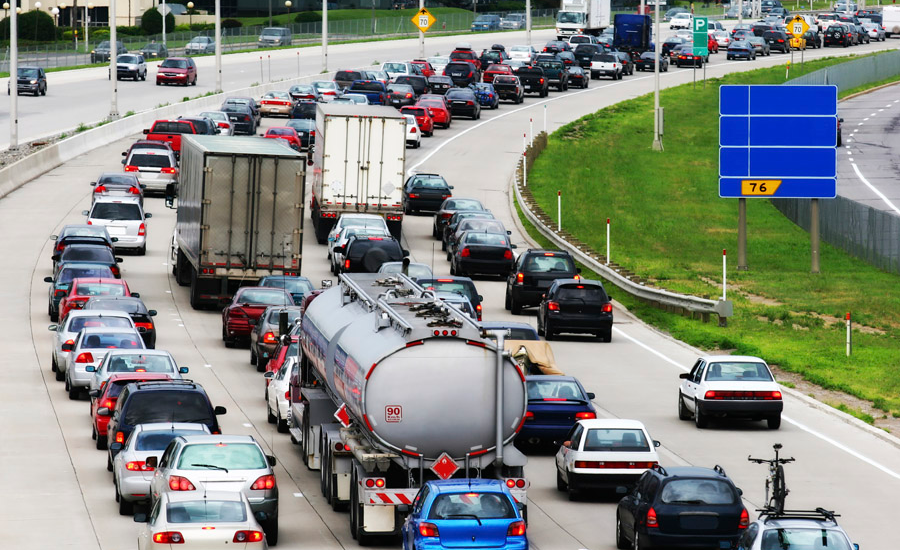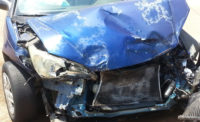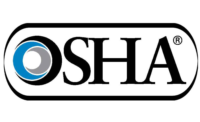The National Transportation Safety Board (NTSB) doesn’t normally investigate minor accidents, but a collision between a truck and a shuttle caught the agency’s attention – because the shuttle was autonomous.
There were no injuries to the seven passengers and one attendant aboard the shuttle or to the driver of the truck in the November 8, 2017 incident in Las Vegas involving a commercial truck and the autonomous shuttle. The shuttle incurred minor damage and the truck had a minor abrasion to one of its tire.
The NTSB’s investigation has determined that the truck driver’s actions and the autonomous vehicle attendant’s lack of easy access to a manual controller were the probable causes of the collision.
“The involvement of a highly automated vehicle warranted having our investigators examine the circumstances surrounding the collision,” said Kris Poland, Deputy Director of the NTSB’s Office of Highway Safety. “We wanted to examine the process of introducing an autonomous shuttle onto public roads as well as the role of the operator, the vehicle manufacturer, and the city. The NTSB also examined the technology and the safety considerations that were in place at that time.”
Passengers waved to get truck driver's attention
The collision happened after the shuttle turned onto a street where the truck was backing into an alley. The truck driver said he saw the shuttle turn and assumed it would stop within a “reasonable” distance from the truck. The shuttle’s sensor system detected the truck at 147.6 feet and tracked it continuously as it backed up. Programmed to stop 9.8 feet from any obstacle, the shuttle began to decelerate when it was 98.4 feet from the truck. When the shuttle was 10.2 feet from the truck and nearly stopped, the attendant pressed one of the emergency stop buttons. The attendant and passengers waved to get the truck driver’s attention but 11 seconds after the shuttle stopped, the right front tire of the slow-moving truck struck the shuttle.
| The shuttle’s performance could be monitored in real time from its control center in Lyon, France. |
The autonomous shuttle was a two-axle, battery-powered, test vehicle designed primarily for autonomous operation and therefore did not have a steering wheel, brake pedal, or accelerator pedal. The shuttle allowed for manual operation using a hand-held controller. The shuttle could operate autonomously only on a predetermined route that had been fully mapped. The route was planned by Keolis (a public transportation service operator), Navya (the shuttle manufacturer) and AAA (sponsor of the shuttle) with input from the city. Navya and Keolis had the required state and federal approval to test autonomous shuttle operations on public roads.
Numerous sensing devices
The shuttle was equipped with numerous sensing devices that provided a 360-degree view of the environment with hazard detection capabilities. Some of the sensing devices included eight light detection and ranging (lidar) sensors, two stereoscopic cameras and a differential global positioning system. The shuttle was also equipped with a dedicated short-range communication system and a long-term evolution antenna that communicated with traffic signals along the route. Navya could monitor the shuttle’s performance in real time from its control center in Lyon, France. The shuttle was equipped with a Lytx DriveCam monitoring and recording device that tracked driving metrics and recorded telematic and visual information triggered by critical events.
Prior to the collision the hand-held controller for manual operation was stored in an enclosed space at one end of the passenger compartment and the attendant did not retrieve the controller during the event. Since the accident, Keolis implemented a new policy to make the controller more accessible, allowing attendants to remove the controller from storage at the start of a trip and keep the controller available throughout a trip.
The full highway accident brief is available online at https://go.usa.gov/xyNnR and other publicly released information about the NTSB's investigation of the collision is available online at https://go.usa.gov/xyNnS.




